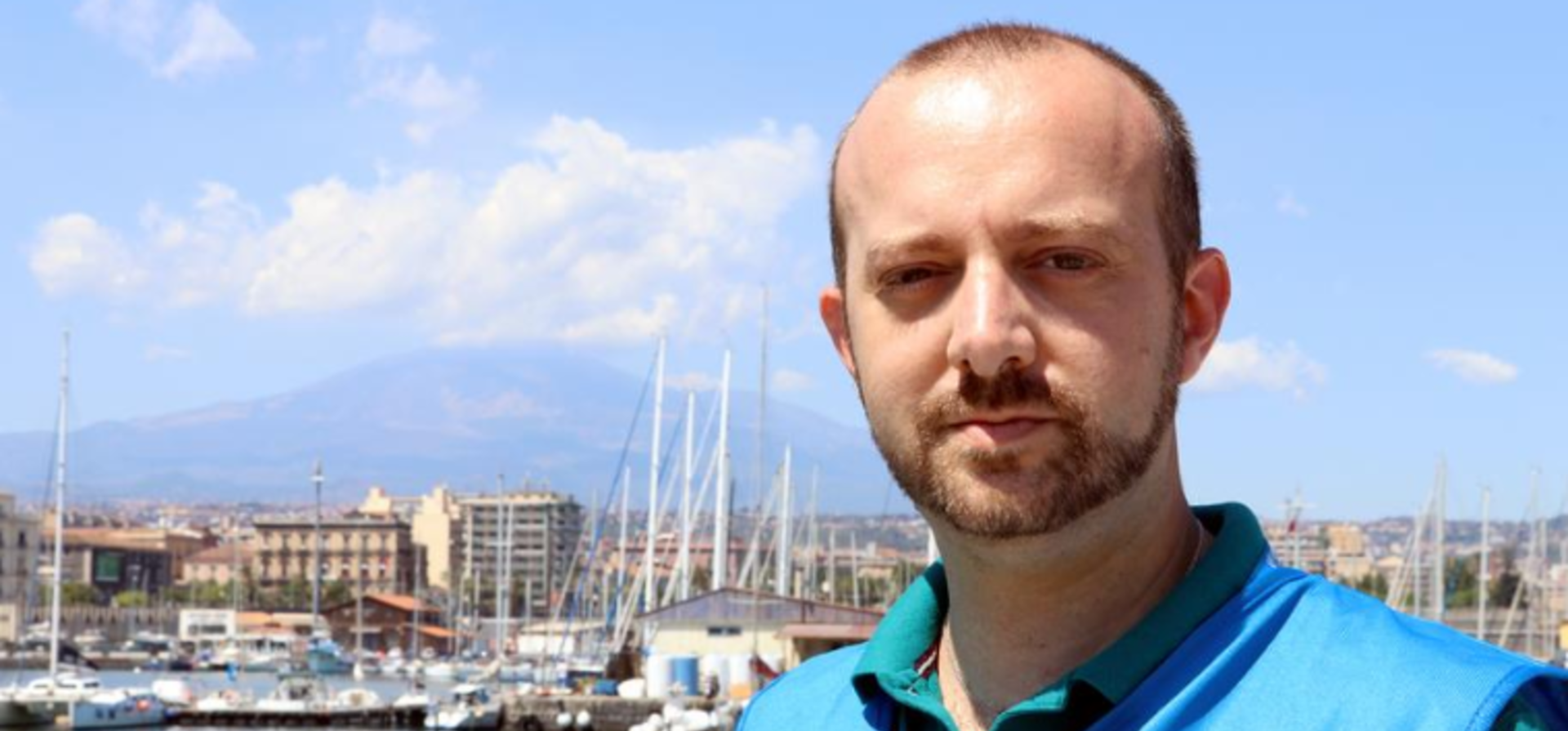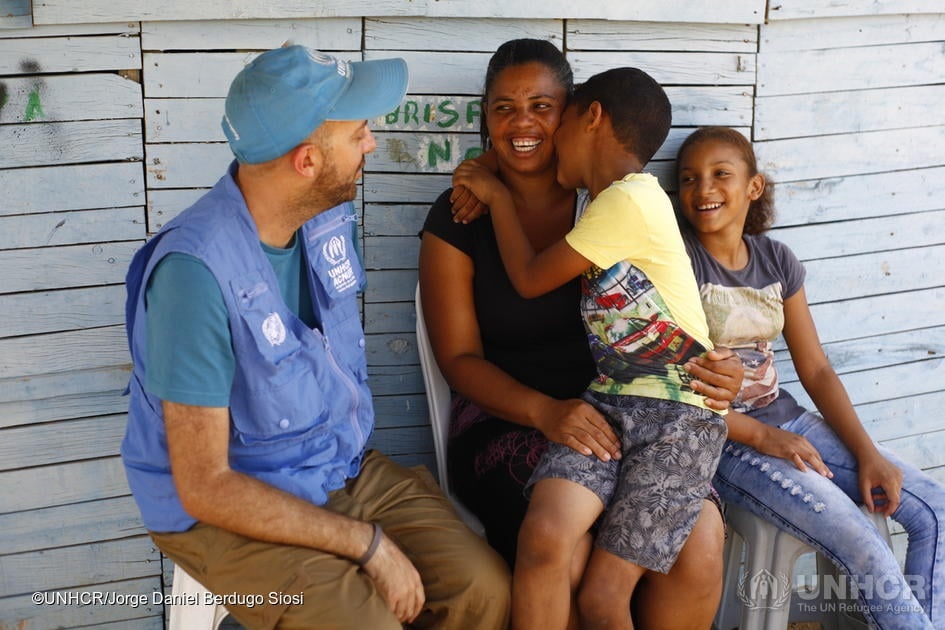Using Innovation and Technology to Support Refugees in Times of COVID-19 and Beyond

Using Innovation and Technology to Support Refugees in Times of COVID-19 and Beyond
Marco, you are part of an energetic Communication with Communities (CwC) team. What first drew you towards working for UNHCR in Turkey and what are your core responsibilities?
I decided to join UNHCR in Turkey, as it is one the most dynamic operations worldwide. Today, Turkey is hosting more refugees than any other country around the globe – almost 4 million! This also means that there are several best practices coming out of this operation, including on how to best communicate with the people we serve. I felt that I had to join and contribute to this massive endeavour!
The CwC team’s work includes two main elements: firstly, we produce contents for refugees and asylum-seekers which are then disseminated either in-person or digitally on UNHCR’s online platforms. At the same time - and this is the second key aspect of our work - we strive to pursue a two-way communication stream. This means that we try to actively engage with the refugees, taking note of the needs they are expressing as well as their suggestions. This approach allows refugees to contribute to our thinking but also to the design and reshaping of programmes in a way that is of most benefit to them. They are our ultimate partners and the person we are here to serve.
Why is it essential to listen and communicate with refugees in a humanitarian response? What are some key challenges in this regard?
When I think about our communication approach, I often like to refer to ‘do no harm’, one of the most important principles of humanitarian assistance, which states that humanitarian actors have an obligation to strive and minimize the harm they may inadvertently cause when providing aid. For example, if we deliver assistance without effectively communicating and consulting with the refugees, we might provide the wrong kind of services or even aid that could create more harm than good. Therefore, it is necessary to communicate with refugees at all stages and the CwC team is an integral part of this process.
In Turkey, a key challenge that the team is facing is the big size of the country and the fact that refugees and asylum-seekers do not live in one specific region but spread across the country’s eighty-one provinces. For us to be able to reach as many refugees as possible, our online communication channels have become crucial. They enable us to communicate with high numbers of people, in different regions, and in very short timeframes.
“In Turkey, a key challenge that the team is facing is the big size of the country and the fact that refugees and asylum-seekers do not live in one specific region but spread across the country’s eighty-one provinces.”
Indeed, the use of digital platforms is crucial and seems to be even more relevant in times where in-person gatherings are to be avoided to limit the spread of COVID-19. How do you make sure to reach all refugees, including people who are not able to read, do not have internet access or are not on social media?
When I came to Turkey, I realized that there was a big advantage from a communication point of view: the long-standing nature of the refugee situation led to the creation of different networks at the local level, and most of these communities are part of a digital environment. Therefore, today, UNHCR’s objective is to reach these networks, and through them the refugee population at large, including those who do not use smart phones or digital tools. Local communities and networks are therefore a great opportunity for us to spread our message.
Also, our communication response aims at leaving no one behind. This includes finding solutions to reach the part of the refugee population that is illiterate. We have therefore started to disseminate the same key messages in different shapes and forms. This includes videos with subtitles, audio files, pictures and infographics with little to no texts so that everyone can understand and internalize the information we deliver.
“Our communication response aims at leaving no one behind. This includes finding solutions to reach the part of the refugee population that is illiterate.”

In his past assignment, Marco Rotunno was a part of the CwC team supporting Venezuelan refugees in Colombia. All around the world, communicating with refugees is an essential component of UNHCR’s work.
What has been the most rewarding aspect of your work so far?
The most rewarding aspect of my work is to use innovation and technology to help refugees better access to the services available. For this reason, one of my key objectives from the beginning of my assignment was to use a new digital approach to reach more refugees and seek their active feedback. This was done in two steps: first, we created an inter-network, including every UNHCR field unit, engaging colleagues and partners working on the ground. Secondly, we set up a ‘WhatsApp communication tree’ which helped us trickle down key messages directly to the refugee communities. To date, more than 11,000 refugees have become a part of this digital solution and we continue to grow. Thanks to the creation of these multiple WhatsApp trees, it is now much easier for UNHCR to receive feedback from refugees from all over Turkey.
“The most rewarding aspect of my work is to use innovation and technology to help refugees better access the services available.”
The EU and other donors have supported UNHCR in building and maintaining key digital tools to reach refugees, such as the UNHCR Help website and the Facebook Turkey Information Board. How do these initiatives make a change in the lives of the refugees in Turkey?
The support of the EU and other donors for the CwC platforms have been crucial for the success of these digital tools. The Help website[1] has become a one-stop-shop for all the information refugees may need upon their arrival to Turkey and beyond, whereas the Facebook Turkey Information Board serves as a more dynamic and interactive channel to engage with the persons we serve. In Turkey, we are lucky because refugees really use these online tools. According to one of our conducted surveys, 77% of the refugees in Turkey use a smartphone with internet every day while 71% use social media and messaging applications every day. These figures confirm the widespread use of technological/digital channels and tools among the refugees in Turkey.
We also found that refugees frequently use Google as a search engine to ask key questions, such as inquiries about resettlement and registration. In that respect, UNHCR has developed a project with Google: aiming at ensuring that the contents of the Help website are the first information people can see and access if they type any refugee-related questions on the search engine. By this way, UNHCR’s messages have become much more accessible and it is easier for the refugees to find a trusted source of information online. We are particularly proud that this project has been launched for World Refugee Day 2020. On this occasion, Google also published an article about it.
In addition to this, in times of COVID-19 and the high number of measures announced by the national authorities in Turkey to contain the virus, we have found the Facebook Turkey Information Board Page to be particularly useful. We have used the page to share ‘breaking news’ with refugees and asylum-seekers in their native languages, including Arabic, Farsi, Turkish and English. We realised that a high number of refugees previously had difficulty to understand the COVID-19 related announcements of the government. The use of Facebook has helped us reach refugees with the latest COVID-19 updates in their languages and in real-time - from curfew orders, to recommended hygiene practices, to information on how to receive treatment in case a person falls ill.
“The use of Facebook has helped us reach refugees with the latest COVID-19 updates in their languages and in real-time - from curfew orders, to recommended hygiene practices, to information on how to receive treatment in case a person falls ill.”
The COVID-19 outbreak has shown that misinformation can be a key and dangerous issue all over the world. How does the CwC team tackle the problem of misinformation spreading among refugee communities in Turkey?
Misinformation has indeed been an important topic for us, even before COVID-19. As many issues affecting refugees can be quite sensitive and complex, the voluntary or involuntary spread of incorrect information happens regularly. For example, misinformation can quickly be disseminated in the form of fake online accounts. For this reason, we regularly monitor key social media channels, including Facebook, YouTube or Telegram, and report suspicious accounts. The monitoring also helps us understand what “hot topics” are of concern to the refugees in any given moment. We then use our official UNHCR platforms to provide clarifications on key issues or offer more details where needed.
Looking into the future, are there any new communication initiatives that you are working on?
Yes! Going ahead, I am looking forward to the development of new partnerships between UNHCR and some key digital influencers, who are running accounts with many followers from the refugee community. This will be part of our ‘refugee-to-refugee’ communication: through the help of influencers who are refugees themselves, we would reach even more people online who already trust the members of their own community. This would also help us shape their messages, so the information they share with their networks is accurate and up to date, which also helps us to prevent the spread of incorrect information on online platforms.
Also, I am excited that UNHCR is about to release a chatbot, which will be downloadable through a mobile application as well as accessible on the Help website. The chatbot will be available to refugees on a 24/7 basis and will help them receive quick answers to simple inquiries and to promptly guide them to additional resources for more information. We hope that this will provide a swift and efficient response to the most asked questions by refugees and complement UNHCR’s ongoing phone counselling services.
I am hopeful that these new initiatives will further help refugees and asylum-seekers receive the relevant and trusted information they need. Ultimately, this will help them make informed decisions about their lives and contribute to the improvement of their situation in Turkey in the long-term.
[1]The Help website provides up-to-date news and informative content for refugees in several languages at https://help.unhcr.org/turkey/.

